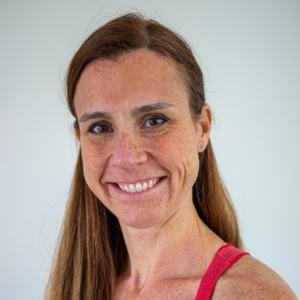When we had a brick-and-mortar LYT NJ studio, we used to sell shirts with the phrase “Smart Yoga” on them. One day, someone asked me what that meant and I realized she probably isn’t the only one who didn’t know! What is it about the LYT Method that makes it “smart”? In my opinion, it comes down to one thing: following the neurodevelopmental sequence from beginning to end.
The neurodevelopmental sequence is the normal movement progression that babies follow as they learn to roll, sit, crawl, stand, and then walk. Many rehab professionals use this sequence to progress their older patients in a clinical setting. The lower developmental postures provide the necessary strength, stability, and coordination required of the higher developmental postures. The milestones that babies reach on their way to standing is the basic premise of the neurodevelopmental sequence. In infants, the sequence normally followed is as follows:
- Supine → Head and Neck Control in Prone → Rolling → Grasping → Sitting → Quadruped → Crawling → Tall Kneeling → Half Kneeling → Standing → Walking
If we convert this to the adult population in a rehab or functional training setting, we may adjust the head and neck control since most people can easily hold up their head. However, it doesn’t mean we eliminate it completely, as many people lack correct cervical positioning or posture. The same is true with grasping. While we may not have to teach someone to hold objects in their hands during a training session, we often need to educate about the use of hands successfully in weight-bearing positions. Skipping over any of these developmental levels can leave people without the foundation they need to be successful at the higher levels. This includes yogis. Without these basic foundational skills, people are at a higher risk of injury. Each movement pattern serves as a stepping stone, helping to sufficiently build correct posture, balance, mobility, and stability to allow movement onto the next level.
So how does this translate to LYT Yoga®? Every single time you get on your mat, we are following the neurodevelopmental sequence. We begin every class with the Reset for a reason. Within the Reset alone, we go from Bridge (Supine) → Ab Work (Supine) → Supine Twist (Rolling) → Cat/Cow (Quadruped) → Dolphin (Quadruped) → Half Kneeling/Standing (Sun Salutation 1). With the Bridge and Ab Work, we’re preparing the body at its lowest developmental level. This allows us to really focus on neutralizing the pelvis, waking up the back body, and heating up the core cylinder. We don’t have to worry about balance or stability (unless we choose to). The LYT version of the Supine Twist is active (not a passive stretch) for a reason. With adults, the rolling movement strategy isn’t used very often and becomes deficient. It’s a great technique to restore balanced movement between the legs, trunk, and arms. The movement is initiated at the leg (pressing the inner edge of the foot into the mat), transmitting force through the core to the arms (stabilizing through the scapulae). Moving into Cat/Cow and/or Dolphin progresses the body into Quadruped, where stability through both the hip and shoulder girdles is required. This uses the proximal stabilizers of the pelvis, scapulothoracic region, and spine. Finally, the reason we do Sun Salutation 1 in every full LYT class is because it follows the neurodevelopment progression into half kneeling (Low Lunge) and standing (Tadasana). In my early Beginners classes, I actually add tall kneeling into my Sun Salutation 1 between Down Dog and Low Lunge, as many people lack the strength, stability, or simply the hip range of motion to step the foot forward with control.
Another principle of neurodevelopmental sequencing is that you move from simple to complex. This is where the Sequences and the Stream come into play. You should notice in every class a progressive increase in difficulty and complexity from one Sequence to the next, which culminates to the Stream, where we may spice it up even further. In the simplest of terms, repetition is how we learn, and tweaking things is how we grow. This turns every single LYT Yoga® class into a therapeutic rehabilitation and functional movement training session. It’s smart because it’s intentional, it’s planned, and it follows the neurodevelopmental sequence.
If you’re interested in learning how to teach the LYT Yoga® Method or just want to deepen your knowledge about the body and how to move better, we have our next online teacher training cohort beginning on March 12th! Click the link below for more details!!
Xoxo,
Kristin











